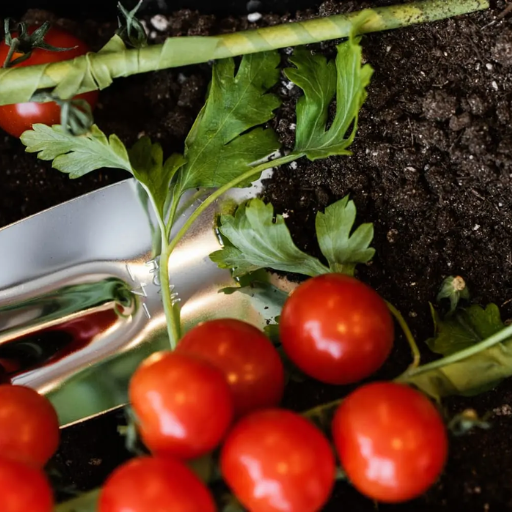Garden lovers keen on increasing tomato yields resort to organic remedies promoting plant health. Epsom salt is one such remedy with an increasing following because it has a high magnesium concentration and several gardening benefits. In this article, we shall discuss whether Epsom salt is good for tomato plants. We will look at its influence on growth, the most effective application methods, and professional advice for utilizing this multi-purpose substance optimally. This inclusive guide is meant for everyone starting in gardening or even seasoned gardeners who wish to improve their experience growing tomatoes.
Why Use Epsom Salt for Tomato Plants?
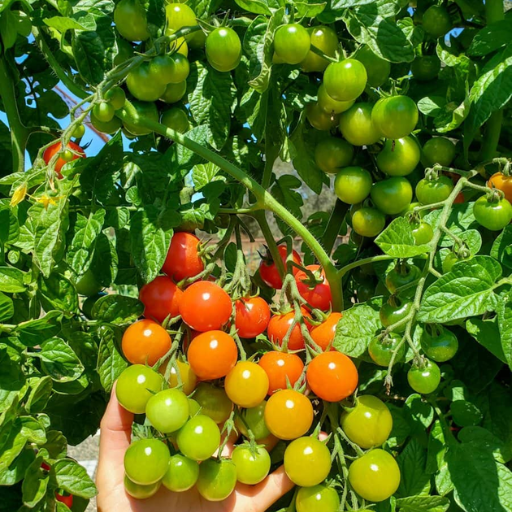
How Does Epsom Salt Benefit?
Epsom salt provides several critical benefits for tomato plants. First, it has a high magnesium content that improves nutrient absorption, fostering better growth and more vigorous plants. Magnesium is essential for photosynthesis, helping plants effectively convert solar energy into chemical energy. Moreover, Epsom salt can improve fruit taste and size, producing more excellent harvests. It can also help prevent things like blossom rot, a common problem caused by a lack of calcium. After the inclusion of Epsom salt in your garden routine, you get healthy tomato plants with more yields.
How do Magnesium and Sulfur Help Tomato Plants?
Magnesium and sulfur are crucial for growing tomatoes. Magnesium constitutes the core of chlorophyll, without which tomatoes cannot convert sunlight to energy efficiently. This process increases plant capacity and has a direct influence over fruit set by increasing blossoms into fruits that emerge from flowers on a plant. The optimum magnesium level range in the soil is 50-100 ppm.
On the other hand, proteins are synthesized with the development of amino acids, where sulfur plays an essential role; this promotes vegetative development, too. Additionally, sulfur helps chlorophyll formation, making leaves more green due to the enhanced light-absorption capability that results from them. The best level of sulfur required by tomato plants ranges between 10-20 ppm approximately. Both magnesium and sulfur contribute towards the overall health of a tomato plant, leading to healthier plants and improved fruit quality, including taste and size. By ensuring an adequate supply of these nutrients, farmers can maximize the productivity of tomato crops.
Is it possible For Epsom salt to increase fruit production?
Yes! Based on my experience using Epsom salts with my tomatoes, I have seen an increase in fruit production in these plants. Magnesium and sulfur promote good photosynthesis within my tomato plants, hence the overall improvement in growth. One interesting thing I found after putting Epsom salts into my garden was that the flowers produced more, resulting in a larger harvest. Furthermore, it improved tomatoes’ taste and size, making them more enjoyable to eat. All in all, I can say that Epsom salt benefits anyone who wants to go up on his or her tomato farming scale.
How to Add Epsom Salt to Your Tomato Plant

Guide to Adding Epsom Salt to Soil
- Consider the Best Time: I like the time during the planting season or when the plants are actively growing. It is suitable in the morning when the plants still have some moisture.
- Determine Quantity: I usually use about one tablespoon of Epsom salt per foot of plant height. For my tomato plants, I will mix a diluted solution of 2 tablespoons per gallon of water.
- Dissolve in Water: Dissolving all the measured Epsom salt in a gallon of water creates a good nutrient solution.
- Apply to Soil: I pour this solution around the base of tomato plants, specifically onto their soil, feeding it with nutrients. When applying this solution, I try not to touch the leaves to prevent burns.
- Repeat if Necessary: To sustain optimum concentrations, this mixture should be applied every four to six weeks while crops are growing and nutrient deficiencies are being monitored.
This simple method has significantly improved my tomatoes’ health and yield, making it an excellent addition to my garden practices.
Using Epsom Salt as Foliar Spray
When I use Epsom salt foliar spray, it is a great way to give a quick nutrition boost to my tomato plants. To make this spray, dissolve one or two tablespoonfuls of Epsom salt in one gallon of water. After that, the mixture must be thoroughly mixed to ensure all the contents have been transferred into a sprayer bottle. I use this spray in the late afternoon or early evening because leaves take up their nutrients without getting burnt by sun rays. It’s also advisable to apply some spray beneath the leaf surfaces where several pests hide, and better absorption occurs. To avoid insufficient nutrients, like at critical growth stages, I repeat this process after several weeks. My tomatoes have become more robust due to using these techniques.
How Often Should You Add Epsom Salt?
Based on my experience, adding Epsom salts to my tomato plants every four to six weeks is best. These time intervals are consistent with recommendations from various gardening websites I have visited. Besides, most sources advise using it during the growing season since plants currently consume most nutrients. Furthermore, suppose there are any signs of nutrient deficiency, such as yellow leaves or stunted growth. In that case, I will reassess and increase how frequently I apply the Epsom salt solution a little more to enable the healthy development of my crops.
When Should You Not Use Epsom Salt for Tomatoes?
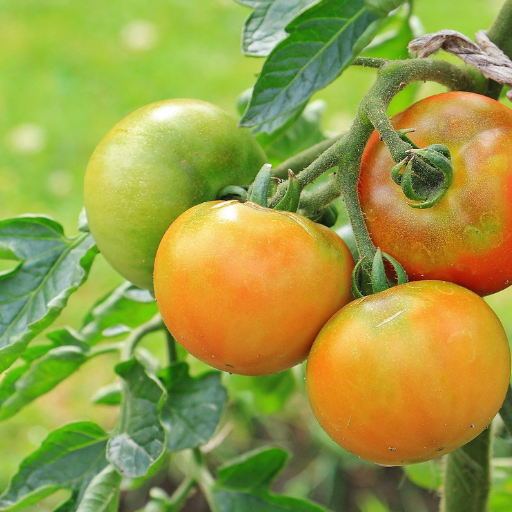
Signs of Tomato Plant that Overdose of Magnesium
In my experience, knowing the signs of excess magnesium in tomato plants is key to their healthy maintenance. These symptoms include leaf curling or twisting, especially on older leaves, and yellowing between veins, referred to as interveinal chlorosis. If leaves fall too fast or grow brown spots, this may show that I have used too many Epsom salts. It is essential to closely examine my plants and adjust my magnesium use to maintain a balanced nutrient regime for best results.
Understanding Soil Test Results
When examining soil test results, I look at several main things to determine my tomatoes’ nutritional requirements. Key elements I assess include pH level and nitrogen (N), phosphorus © potassium (K), and magnesium (Mg).
- pH Level: For me, an ideal soil pH should be between 6.0 and 7.0. A pH outside this range can influence nutrient availability; for instance, if the pH is too low (acidic), micronutrients could become highly available and possibly toxic, while a high pH (alkaline) can lead to deficiencies; hence, it should be adjusted accordingly. Lime can be added if the soil needs its pH raised, or sulfur can lower it, depending on what one’s readings indicate.
- Nitrogen (N): The most crucial element for vegetative growth is nitrogen levels, which ideally range from 20-30 ppm (parts per million) in tomatoes for optimal health situations. If they are below this level, then I may add a balanced fertilizer containing high amounts of nitrogen.
- Phosphorus (P): In an ideal situation, phosphorous levels should be within 20-50 ppm. Root formation and flowering rely heavily on this nutrient; therefore, bone meal or rock phosphate are utilized if the test indicates deficiency.
- Potassium( K): The overall plant function depends on potassium, which should be approximately 100-150 ppm. If the soil test reveals low levels, potassium sulfate or greensand can be used to improve the soil structure.
- Magnesium (Mg): I have been monitoring magnesium levels using Epsom salts, ensuring they are between 50 and 100 ppm. Too much magnesium can lead to imbalances, so my application rates need to be carefully considered based on soil analysis results.
From top gardening resources on this subject, I learned that a comprehensive understanding of these parameters is essential for me to personalize the nutrient supply for tomato plants growing at their best and, hence, adjust my fertilization strategies accordingly according to soil analyses.
Common Myths about Epsom Salt
As I get more into gardening, several misconceptions about Epsom salts have come up. One common myth is that it’s just a kind of fertilizer; even though it does provide magnesium and sulfate, there are no primary nutrients such as nitrogen, phosphorous, or Potassium. As such, I use it as a supplement rather than a complete fertilizer. Another myth claims that Epsom salt has magic powers to increase plant yields instantly. But magensium is crucial for photosynthesis; hence one must have an integrated nutrient plan and good care if high yields are expected. Finally, some people think that applying Epsom Salt can fix their soil problems without understanding that its use should complement rather than substitute soil amendments since factors like soil pH texture and availability of different nutrients are significant for healthy plants’ growth.
How to Identify Magnesium Deficiency in Tomato Plants

What Are the Symptoms of Magnesium Deficiency?
My own experience has taught me that there is a conspicuous way in which magnesium deficiency in tomato plants shows itself. The first symptom I see is yellowing of leaves, especially in older foliage with green veins and paler interveinal spaces called interveinal chlorosis. Also, I noticed that the margins of the leaf start to curl and develop some purple or brown coloration, leading to an overall debilitated plant. Additionally, I watch for stunted growth and fewer fruits in my tomatoes since this often characterizes a deficient plant. The above symptoms enable me to implement prompt countermeasures against nutrient imbalance, keeping my tomatoes healthy and productive.
How to Perform a Soil Test
To perform an effective soil test, I follow these steps to determine the nutrient composition and pH level of my soil. First, I gather what’s needed: a clean bucket, spade/trowel, and soil testing kit, which can be found at gardening stores or online.
- Sampling: I usually start by collecting soil samples from different sections of my garden about 6-8 inches deep, which allows me to represent what could be obtained from diverse places.
- Mixing: Having collected all required samples, I amalgamate them inside this pail until they become one sample, which will give average results about the characteristics of my earth.
- Drying: Then, on a clean surface, I spread this combined soil, allowing it to dry by natural air for twenty-four hours because this prevents interference due to moisture while testing.
- Testing: Fourthly, I follow these instructions just like they are given alongside my soil test kit. Usually, most kits evaluate essential elements like nitrogen (N), phosphorus (P), potassium (K), and pH readings, among others, which should be looked into prior to planting anything.
- Interpreting Results: After completing the tests, I interpret the results with the guide from my kit. For example, tomatoes often prefer a pH between 6.0 and 6.8, which is an ideal figure overall. If there are any shortcomings in nutrient levels, it is recommended to make amendments, such as compost for nitrogen or lime, to adjust pH.
Through constant soil analysis, I ensure that my tomato plants receive the balanced nutrition essential for their best growth and yields.
Other Nutrients Tomatoes Need for Healthy Growth
Beyond nitrogen, phosphorous and potassium I have found numerous other important nutrients beneficial to my tomato crops. Calcium is needed to prevent blossom end rot, a common problem among tomatoes grown under certain conditions. For me, adding gypsum or crushed egg shells into the soil is one way to ensure enough calcium is present in it. Magnesium also plays an important role whereby Epsom salt functions as its supplement; therefore, when magnesium deficiency is encountered in photosynthesis, fruit quality can be enhanced by using Epsom salt. Finally, trace elements like iron and manganese should also be given attention since these two help maintain healthy plants generally. Regularly adding these nutrients keeps my tomato plants alive and productive all through.
Other Uses of Epsom Salt in Your Garden
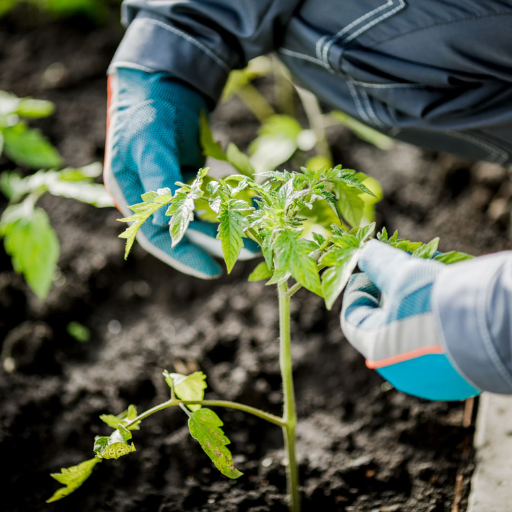
Will pepper plants benefit from the use of Epsom salt?
I have discovered that using Epsom salt on my pepper plants can be advantageous. It provides magnesium and sulfate, which are both important in plant growth and development. Magnesium aids photosynthesis and fruiting, while sulfate helps in overall nutrient uptake. Whenever I apply Epsom salt as a soil amendment or foliar spray, my pepper plants grow more quickly and produce better fruit. Additionally, it can help to stop diseases such as blossom end rot, which is something I always watch out for.
Epsom Salt’s Role in Vegetable Gardens
In my opinion, Epsom salt is an all-purpose additive for vegetable gardens. It enhances nutrient absorption, particularly magnesium and sulfate, essential for many plants, including tomatoes, peppers, and cucumbers. My plant growth rate and yield have improved since I began incorporating Epsom salt into the soil or as a spray for foliage. Furthermore, this also lessens the likelihood of diseases like blossom end rot in tomatoes and peppers. That means during the growing season when they are most demanding of their nutrient reserves, they still get some vital minerals.
How to Prepare an Epsom Salt Solution for Your Garden
I usually adopt a simple method that would enable me to adequately exploit both benefits of magnesium and sulfate whenever making my garden’s effective solution of Epsom salts. This is how I go about it:
- Prompt Ratios: One tablespoonful of Epsom salts mixed with about one gallon of water should suffice for general purposes, such as watering around the base of my plants or spraying leaves.
- Use as Foliar Spray: To boost leaf uptake of nutrients, once every four to six weeks during the growing season, I fill a spray bottle with this solution and mist tomato/pepper leaves directly with it, among other application categories, to feed them magnesium and sulfur.
- Soil Addition: Normally, I apply Epsom salt directly to the soil at a rate of about 1-2 tablespoons per plant once per month, mixed with the soil. This ensures that roots take up the micronutrients over time.
- Reasons for this and what to consider: Though Epsom salt provides essential nutrients, I always assess the needs of my plants and soil health before applying it. Too much can result in an imbalance of nutrients, so I keep my use of Epsom salts balanced by testing my soil and adjusting my application accordingly.
Following these steps has helped me realize ongoing improvements in overall garden health and productivity.
Reference sources
Frequently Asked Questions (FAQs)
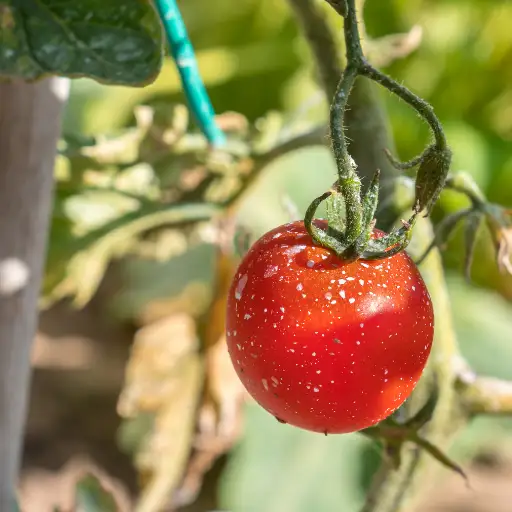
Q: What is Epsom salt, and why is it suitable for tomato plants?
A: Epsom salt, also known as magnesium sulfate, is beneficial for tomato plants because it helps them absorb essential nutrients like magnesium and sulfur, which are critical for their growth.
Q: How do I use Epsom salt to plant tomatoes?
A: Before planting tomatoes, sprinkle one tablespoon of Epsom salt into the planting hole to give the seedlings a magnesium boost. This helps establish strong roots and encourages healthy growth.
Q: How often should I apply Epsom salt to my tomato plants?
A: Many gardeners recommend applying Epsom salt every two weeks. Mix one tablespoon in a gallon of water and put it directly at the base of the plants.
Q: Can Epsom salt help with blossom-end rot?
A: Blossom-end rot is caused by a calcium deficiency, not magnesium. While Epsom salt contains magnesium, it doesn’t cure blossom-end rot. However, it can help strengthen the plant overall, making it more robust and potentially less susceptible to various issues.
Q: What are the signs that my tomato plants need magnesium?
A: When tomato plants are deficient in magnesium, you may notice yellowing between the leaf veins while the veins themselves stay green. Adding Epsom salt can help alleviate this condition.
Q: Can you add too much Epsom salt to tomato plants?
A: Yes, you can add too much Epsom salt. Overapplication can lead to nutrient imbalances, so sticking to the recommended amounts and frequency is essential.
Q: How do I help the Epsom salt dissolve for application?
A: Warm water can help the Epsom salt dissolve better. Mix one tablespoon of Epsom salt into a gallon of warm water and put it around the base of the plant.
Q: Is Epsom salt effective for other plants, too?
A: Yes, Epsom salt can improve the health of other plants, such as peppers and tomatoes, by providing them with essential magnesium.
Q: Why do plants need magnesium?
A: Plants use magnesium to activate many enzyme systems and for photosynthesis. Deficient plants may show poor growth and yield. The addition of Epsom salt can improve these deficiencies.
Q: Are there any misconceptions about using Epsom salt for plants?
A: A common misconception is that Epsom salt can fix all plant problems. While it provides magnesium sulfate, not all plant issues are due to magnesium deficiencies. Proper diagnosis of the plant’s needs is essential.



